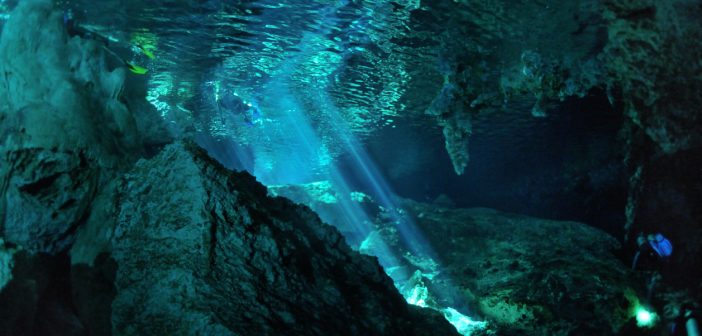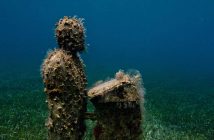The Cenote Trail – La Ruta de los Cenotes, in Spanish – starts on the road from Cancun to Tulum and takes in eight of these natural wonders, all located close to one another. The best-known include Las Mojarras, Boca del Puma, Siete Bocas, Chilam Balam, Verde Lucero, La Noria and Kin-Ha.
The cenotes, also known as sinkholes, were extremely important in the ancient Mayan culture. They were the sites of religious rituals intended to bring rain and fertility – rituals that included human sacrifices. Today these natural pools have become recreational attractions for tourists and locals alike.
The perfect time to visit the cenotes is at noon. We recommend that you make the most of the daylight to enjoy the effects and the colours created as the sun’s rays pierce the crystal clear water.
The depth of each cenote varies, but as a general rule, you need to be a very strong swimmer if you’re planning on taking a dip. If you’re not confident of your swimming abilities, you’re recommended to wear a life vest, because the depth of the water can be anywhere from 10 to 60 metres.
As well as swimming in the refreshing water, at most of the cenotes you can enjoy a host of other activities, from cycling local trails to flying through the air on a zip wire, or simply relaxing in a hammock to the sound of birds singing.
If you want to get up close and personal with the local fauna, there are several agencies that offer cave diving tours with specialist guides. They will help you appreciate the different species of underwater flora and fauna typical of the region.
The cenotes are not only an opportunity to enjoy the natural world, they’re also the ideal places to find out about the ancient Mayan civilisation. During your visit, you’re sure to meet local guides who will be happy to show you the plants typical of the area, and the ways each different species was used by the region’s first inhabitants. One example is the chico zapote or sapodilla tree, which grows in the area. It’s the source of the resin used to make chicle, a natural chewing gum: chicle production was once the region’s main economic activity.
No visit to the Riviera Maya would be complete without a trip round the Cenote Trail. You probably won’t be able to see them all in a single day, but whichever you decide to stop and visit, you’re guaranteed an incredible experience.






